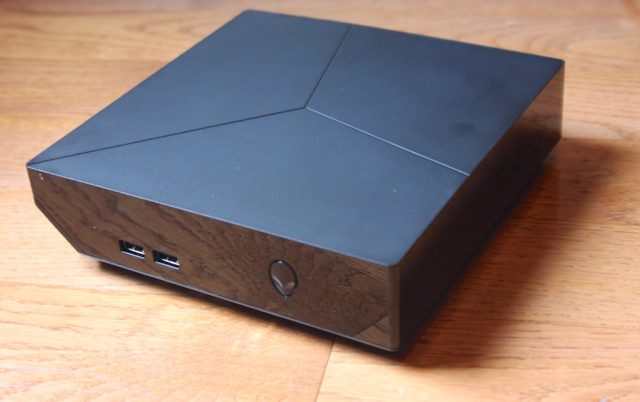
As part of an update on new Steam Controller functions, Valve announced that it has sold over 500,000 Steam Controllers since the early November launch. A Valve representative confirmed to Ars that this number includes the controllers that are packaged with every branded Steam Machine sold through Valve's hardware partners.
Put it together, and you find that there have been less than half a million Steam Machines sold over a span of more than half a year. The real number could potentially be much lower when you consider curious Windows gamers who bought a Steam Controller and SteamOS players who bought additional controllers. While the 500,000 number doesn't necessarily include people who decided to download and install SteamOS on their own PCs (or all sales of Valve's $50 Steam Link streaming box), it probably serves as a good ceiling for the wider SteamOS market at this point.
Half a million might not sound like a bad sales number for a brand new hardware platform, but it starts to look pretty tepid in the context of the wider gaming market. Both the PlayStation 4 and Xbox One sold over a million consoles in their first day on the market in 2013. After just over seven months on store shelves, Microsoft was up to about 5.5 million Xbox One sales and the PS4 had racked up 10.2 million worldwide sales. That's what a successful gaming hardware launch looks like these days.
Steam Machine sales don't look any better when compared to the world of PC gaming. Estimates from John Peddie Research suggest that, in 2015, the worldwide market for new "Enthusiast" and "Performance" PC gaming hardware comprised about $18.3 billion. Even if we're extremely generous and assume SteamOS customers averaged a healthy $1,500 spent per Steam Machine (note the hardware goes for under $500 at the low end), that amounts to just $750 million in sales or about four percent of the annual market (a slightly larger share if you amortize over seven months of availability).
That's something, but it's not the kind of performance that's going to make a dent in the Windows gaming monolith. It's also not the kind of revenue that's likely to get PC hardware makers excited about continuing to support the Steam Machine effort in the long term.
Steam Machines' lack of traction in the marketplace isn't all that surprising. Even years before its launch, the idea looked a bit like a solution in search of a problem, predicated on the belief that Microsoft would start exercising monolithic control of the Windows software marketplace any day now. While SteamOS did a lot to help make the idea of Linux gaming more mainstream, the platform was hurt by a complete lack of system-selling exclusives, a dearth of support from most big-name publishers, and poor technical performance when compared to Windows games on the same hardware.Maybe the entire PC gaming market will suddenly and surprisingly sour on Windows in the near future. Maybe some out-of-nowhere killer app will launch first on SteamOS and lead to a run on Steam Machine hardware. Right now, though, it seems more likely that Valve's first big hardware push will continue to languish in relative market obscurity. Soon, it may end up relegated to the dustbin of gaming business history.
reader comments
282